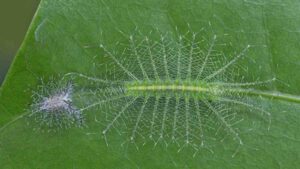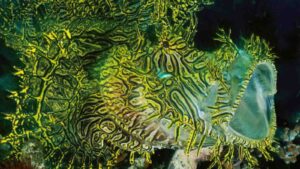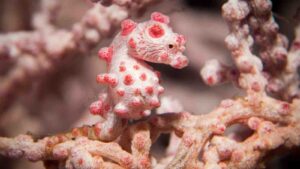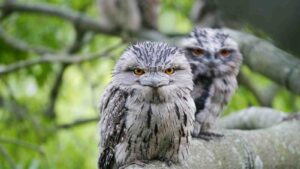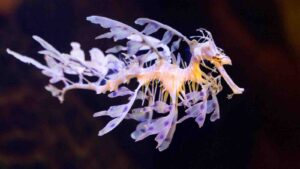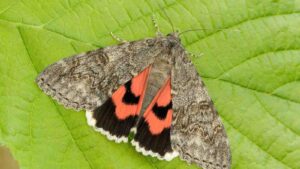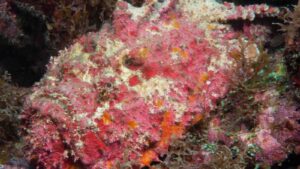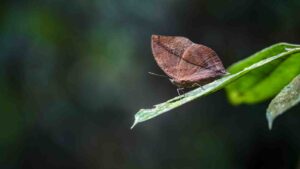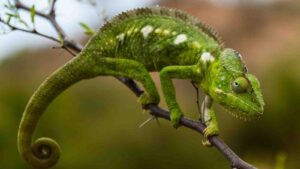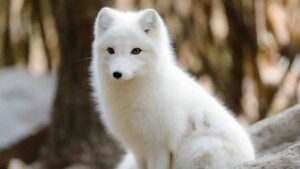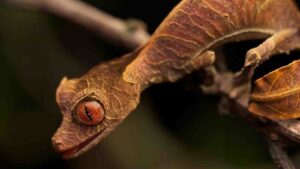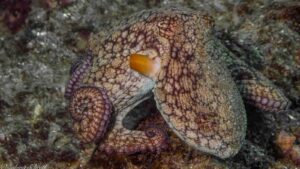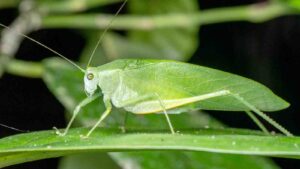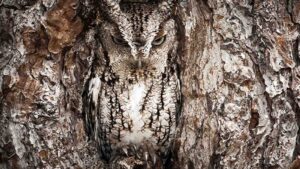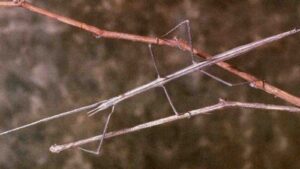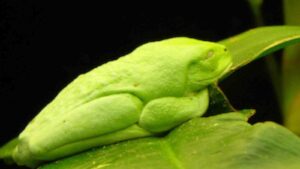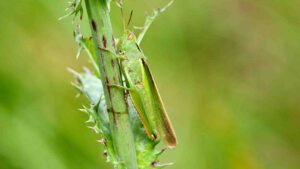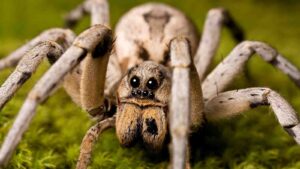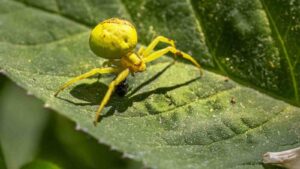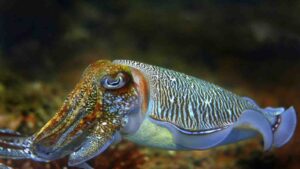Amazing Camouflaged Animals You Won’t Believe Exist
Summary
Ultimate Fact Presents Top 20 Amazing Camouflaged Animals You Won’t Believe Exist. While some animals are so dangerous that they don’t require hiding their presence, others rely on deception and camouflage to prevent themselves from meeting a fateful end at the […]

Ultimate Fact Presents Top 20 Amazing Camouflaged Animals You Won’t Believe Exist. While some animals are so dangerous that they don’t require hiding their presence, others rely on deception and camouflage to prevent themselves from meeting a fateful end at the hands of one of their predators. Color matching is one of the most basic ways animals camouflage themselves. They’re able to blend in simply by matching the color of their surroundings.
See if you can spot any of these 20 incredible camouflaged animals hiding out in their natural habitats. Here we present the Top 20 Amazing Camouflaged Animals you won’t believe exist!
Video: Amazing Camouflaged Animals You Won’t Believe Exist
Baron Caterpillar:
It is native to India and Southeast Asia. They are about 4mm long with small spikes when they hatch, but as they reach their 4th and 5th stages of growth, also known as instars, they can grow to be about 45mm, with much more elongated spikes.
These spikes, along with the caterpillar’s color, allow it to blend in with leaves to avoid predators until it’s ready to mature.
Merlet’s Scorpionfish:
Rhinopias aphanes, one of the best camouflaged animals, have a variety of other names, many of which include the word “lacy.” This is because they have a considerable amount of tentacles and skin flaps, as well as an unusual shape overall, which gives them their so-called lacy look. They use all of these factors to look like plant life, blending in with coral reefs. They will stay still for hours until they get an opportunity to jump out and inhale their prey with their enormous mouths.
Other names include Lacy Scorpionfish, Weedy Scorpionfish, Merlot Scorpionfish, Lacy Stingfish, Lacy Firefish, Lacy Goblinfish, and Lacy Rockfish.
Video: Amazing Camouflaged Animals You Won’t Believe Exist
Pygmy Seahorse:
At a whopping 27mm, this animal with camouflage is the Goliath of the recently mentioned Hippocampus Denise. Its minuscule size and elaborate camouflage help explain why the first was only discovered in 1969 and that only 6 more have been found since, all after 2000.
They can be found 10–40 meters deep, mainly off the coasts of Australia, Indonesia, Japan, New Caledonia, and Indonesia.
Tawny Frogmouth:
This amazing camouflage animal is a type of owl native to Australia. Although they are, unsurprisingly, nocturnal, they have developed a sophisticated method of daytime camouflage: they sit still, close their eyes, stretch their neck, and compact their feathers, making them look like a broken tree branch. This is used as a defense mechanism, not for hunting, like some of the other entries.
Ironically, the biggest threat to the Tawny Frogmouth is their method of hunting. They mainly eat insects, and since they are nocturnal, insects are most visible in lit-up areas. Unfortunately, the most lit area is often directly in front of a moving car, where many of these birds will probably wish they were easier for us to spot.
Leafy Sea Dragon:
Phycodurus eques are native to the oceans south of Australia. Measuring up to 35 cm, they have long, slender bodies, decorated with elaborate leaf-like appendages to help them blend in with the plant life of the water.
They are closely related to sea horses and should not be confused with their much less spectacular cousins, the aptly named Weedy Sea Dragon.
Underwing Moth:
There are over 200 species of underwing moths, mostly found in eastern North America. They are so called because the second set of wings, those only visible when flying, are bright patterns of orange, yellow, red, and white, while their first set of wings are usually a mix of gray and brown patterns.
Experiments have shown that the moths actually choose trees with bark similar to their own color to better protect themselves.
Reef Stonefish:
Synanceia verrucosa is found in the rocky coral of Australian coasts and can measure up to 50 cm. Needless to say, being from Australia, the fish is one of the most venomous in the world. It can inject venom through any of its 13 spouts. Although nobody has died as a result of their venom since Europeans arrived in Australia, their sting is still extremely painful and dangerous. This makes their camouflage a lot more terrifying.
And if you think you can stay safe by keeping out of the water, think again: these fish can survive up to 24 hours on land.
Dead Leaf Butterfly:
Probably one of the most perfect examples of incredible camouflaged animals in the animal kingdom, Kallima inachus, the dead leaf butterfly, is found mainly in tropical Asia, especially India and Japan. As if the camouflage wasn’t elaborate enough as is, the dead leaf butterfly has 2 generations per year, its appearance depending on whether that generation is alive for dry season or wet season.
Their wings can even have patterns to make it look like the leaf is at different stages of decomposition, including actually having holes. The walking leaf insect is another example of an insect that looks extremely like a leaf.
Chameleon:
A distinctive and highly specialized clade of Old World lizards with 202 species described as of June 2015. Chameleons, these amazing animals, are adapted for climbing and visual hunting. They live in warm habitats that range from rain forest to desert conditions, with various species occurring in Africa, Madagascar, southern Europe, and across southern Asia as far as Sri Lanka.
Different chameleon species are able to vary their coloration and pattern through combinations of pink, blue, red, orange, green, black, brown, light blue, yellow, turquoise, and purple.
Arctic fox:
They live in some of the most frigid extremes on the planet, but they do not start to shiver until the temperature drops to −70 °C. Among its adaptations for survival in the cold is its dense, multilayered pelage, which provides excellent insulation. Additionally, the Arctic fox is the only canid whose foot pads are covered in fur.
The white morph has seasonal camouflage, white in winter and brown along the back with light gray around the abdomen in summer. The blue morph is often a dark blue, brown, or grey color year-round. Although the blue allele is dominant over the white allele, 99% of the Arctic fox population is the white morph.
Satanic leaf-tailed gecko:
The gecko, another amazing camouflaged animal, occurs in a variety of colors, including hues of purple, orange, tan, and yellow, but is often mottled brown, with small black dots on the underside that help to distinguish it from similar species.
Habitat destruction, deforestation, and collection for the pet trade all threaten the existence of this animal. Studies suggest that leaf-tailed geckos can only inhabit a very specific environment and are not tolerant of any degradation of their natural habitat. This makes the satanic leaf-tailed gecko very vulnerable to the impacts of habitat degradation and harvesting, a common problem due to it being a very popular pet.
Octopuses:
They can create distracting patterns with waves of dark coloration across the body, a display known as the “passing cloud.” Muscles in the skin change the texture of the mantle to achieve greater camouflage. In some species, the mantle can take on the spiky appearance of algae; in others, skin anatomy is limited to relatively uniform shades of one color with limited skin texture.
A “moving rock” trick involves the octopus mimicking a rock and then inching across the open space with a speed matching the movement in the surrounding water, allowing it to move in plain sight of a predator.
Katydids:
This another incredible camouflaged animal is primarily nocturnal in habit with strident mating calls. Many katydids exhibit mimicry and camouflage, commonly with shapes and colors similar to leaves.
When they go to rest during the day, they enter a diurnal roosting posture to maximize their cognitive qualities. This position fools’ predators into thinking the katydid is either dead or just a leaf on the plant. Various tettigoniids have bright coloration and black apical spots on the inner surfaces of the tegmina and brightly colored hind wings. By flicking their wings open when disturbed, they use the coloration to fool predators into thinking the spots are eyes. This, in combination with their coloration mimicking leaves, allows them to blend in with their surroundings but also makes predators unsure which side is the front and which side is the back.
Owl:
The coloration of the owl’s plumage plays a key role in its ability to sit still and blend into the environment, making it nearly invisible to prey. Owls tend to mimic the coloration and sometimes the texture patterns of their surroundings, the barn owl being an exception.
The snowy owl appears nearly bleach-white in color with a few flecks of black, mimicking their snowy surroundings perfectly, while the speckled brown plumage of the tawny owl allows it to lie in wait among the deciduous woodland it prefers for its habitat. Likewise, the mottled wood owl displays shades of brown, tan, and black, making the owl nearly invisible in the surrounding trees, especially from behind. Usually, the only telltale sign of a perched owl is its vocalizations or its vividly colored eyes.
Phasmatodea:
Their natural camouflage makes them difficult for predators to detect; still, many species have one of several secondary lines of defense in the form of startle displays, spines, or toxic secretions. The world’s longest insect’s body is often further modified to resemble vegetation, with ridges resembling leaf veins, bark-like tubercles, and other forms of camouflage.
The defense mechanism most readily identifiable with Phasmatodea is camouflage, in the form of a plant mimicry. Most phasmids are known for effectively replicating the forms of sticks and leaves, and the bodies of some species are covered in mossy outgrowths that supplement their disguise. Remaining absolutely stationary enhances their inconspicuousness. Some species have the ability to change color as their surroundings shift.
Read More: Most Incredible Animal Births in the World
Frog:
Camouflage is a common defensive mechanism in frogs. Most camouflaged frogs are nocturnal; during the day, they seek out a position where they can blend into the background and remain undetected. Some frogs have the ability to change color, but this is usually restricted to a small range of colors. For example, White’s tree frog varies between pale green and dull brown according to the temperature, and the Pacific tree frog has green and brown morphs, plain or spotted, and changes color depending on the time of year and general background color.
Features such as warts and skin folds are usually on ground-dwelling frogs, for whom smooth skin would not provide such effective camouflage. Certain frogs change color between night and day, as light and moisture stimulate the pigment cells and cause them to expand or contract. Some are even able to control their skin texture.
Grasshopper:
Grasshoppers exemplify a range of anti-predator adaptations, enabling them to avoid detection, to escape if detected, and in some cases to avoid being eaten if captured. Grasshoppers are often camouflaged to avoid detection by predators that hunt by sight; some species can change their coloration to suit their surroundings.
Wolf spider:
They resemble nursery web spiders, but wolf spiders carry their egg sacs by attaching them to their spinnerets, while the Pisauridae carry their egg sacs with their chelicerae and pedipalps. Two of the wolf spider’s eight eyes are large and prominent, which distinguishes them from the nursery web spiders, whose eyes are all of roughly equal size. This can also help distinguish them from the similar-looking grass spiders.
They depend on camouflage for protection; they do not have the flashy appearance of some other kinds of spiders. In general, their coloration is appropriate to their favorite habitat.
Crab Spider:
Thomisidae do not build webs to trap prey, though all of them produce silk for drop lines and sundry reproductive purposes; some are wandering hunters, and the most widely known are ambush predators. Some species sit on or beside flowers or fruit, where they grab visiting insects. Individuals of some species are able to change color over a period of some days to match the flower on which they are sitting. One of the poisonous camouflaged animals in the animal kingdom.
Some species frequent promising positions among leaves or bark, where they await prey, and some of them sit in the open, where they are startlingly good mimics of bird droppings. However, these members of the family Thomisidae are not to be confused with the spiders that generally are called bird-dropping spiders, not all of which are close relatives of crab spiders.
Read More: 20 Most Unusual Couples in the World
Cuttlefish:
They are indeterminate growers, so smaller cuttlefish always have a chance of finding a mate the next year when they are bigger. Additionally, cuttlefish, the master of camouflage, unable to win in a direct confrontation with a guard male, have been observed employing several other tactics to acquire a mate.
The most successful of these methods is camouflage; smaller cuttlefish use their camouflage abilities to disguise themselves as female cuttlefish. Changing their body color and even pretending to be holding an egg sack, disguised males are able to swim past the larger guard male and mate with the female.
Have you ever seen any of them in real life? Let us know in the comment section.
